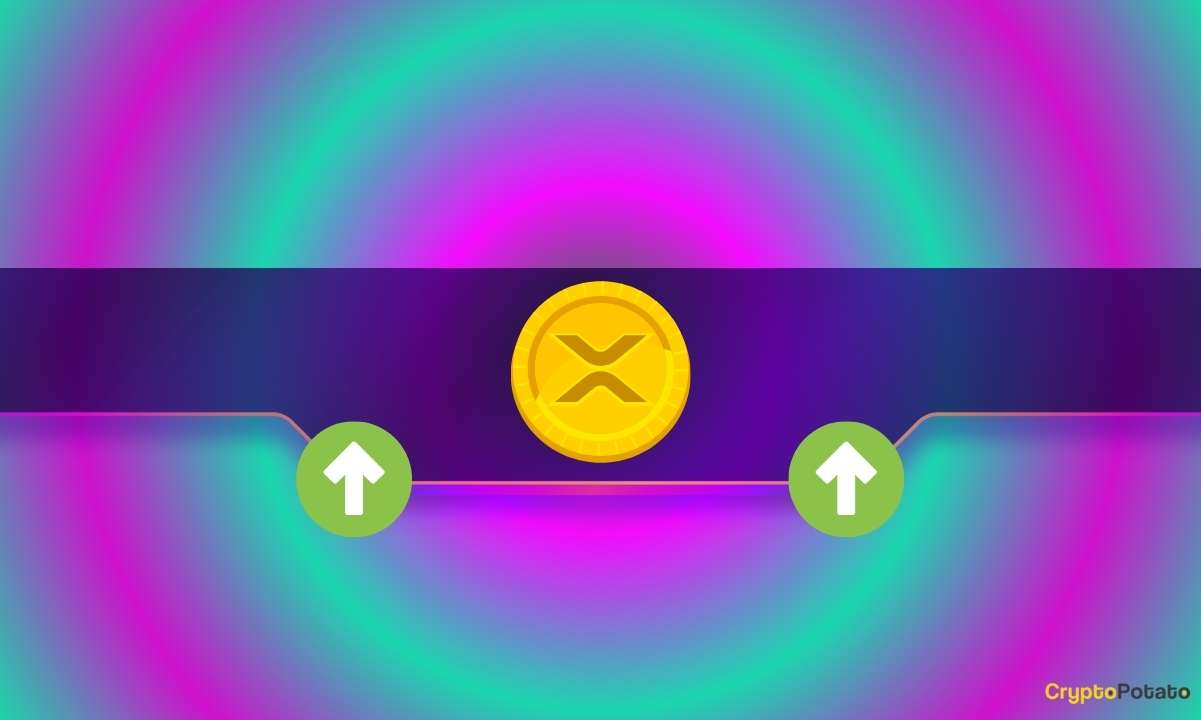
DEXs are rapidly gaining ground in the perpetuals market, now holding nearly 10% of the market share, up from just 3-4% earlier this year. This growth is particularly noticeable on Solana-based platforms, where perpetual trading volumes have surged by over 50% since late 2023. In July 2024 alone, the DEX-to-CEX futures trade volume ratio reached 13.9%, underscoring the growing appeal of on-chain trading.
These trends signal increasing confidence in DeFi solutions, driven by transparency, lower costs, and the inclusion of new assets like real-world assets (RWAs) on decentralized platforms.
With Tristan we discussed the key drivers behind the increasing shift from CEXs to DEXs in perpetuals trading and how DEXs are solving liquidity challenges to attract more traders.
Also he gave us a new perspective on trading strategies on DEXs, such as arbitrage and funding rate exploitation, and how they are attracting sophisticated traders.
What do you see as the primary drivers behind the growing shift from centralized exchanges (CEXs) to decentralized exchanges (DEXs) in the perpetuals market?
The primary drivers behind the shift from CEXs to DEXs in the perpetuals market include greater transparency, reduced counterparty risk, and enhanced control over assets. Decentralized exchanges operate on-chain, ensuring that users can audit transactions, positions, and collateral in real time, which builds trust. Additionally, recent regulatory pressures on centralized exchanges have made decentralized platforms more attractive, offering a censorship-resistant and more permissionless environment. Zeta Markets has observed that traders are increasingly drawn to these advantages, alongside improvements in the user experience and execution speeds, DEXs like Zeta X are closing the gap with CEXs, further accelerating this shift.
Solana-based platforms have seen a significant surge in perpetuals trading volumes recently. What unique advantages does Solana offer for these kinds of trading activities compared to other blockchains?
Solana’s unique combination of high throughput and low-latency transactions makes it an ideal blockchain for perpetuals trading. With its ability to process thousands of transactions per second and sub-second finality, Solana enables traders on platforms like Zeta Markets to experience near-instant order matching and execution, critical for high-frequency and algorithmic trading strategies. Unlike Ethereum, Solana’s low transaction fees allow traders to trade actively and frequently without worrying about prohibitive gas costs, making it particularly well-suited for driving usage in high throughput applications like perpetuals trading.
How has Zeta Markets managed to tackle the liquidity challenges that have traditionally been a barrier for DEXs in attracting more traders?
Zeta Markets has addressed liquidity challenges by leveraging partnerships with key liquidity providers who are native to the Solana ecosystem. Zeta X will leverage a purpose built L2 on Solana, Bullet, launching in Q1 2025. This will further enhance throughput while maintaining a high-performance order book structure, which will make market making much more cost effective and efficient – ultimately making it more attractive and sustainable for MMs to trade on DeFi. This solution will also be far easier to integrate, with REST APIs which are similar to centralized exchange APIs further reducing the technical barriers for onboarding market makers. Traditionally market making on DeFI and orderbook structures were impossible but the throughput and latency of both Solana and Zeta X (built on bullet) enables the onboarding of liquidity seen on centralized venues into the onchain realm.
Can you elaborate on some of the new trading strategies, such as arbitrage and funding rate exploitation, that are emerging on DEXs, and how these strategies are attracting more sophisticated traders to Zeta Markets?
Due to the transparency and granularity of on-chain exchanges traders have more access to data, this opens the door for strategies like arbitrage and funding rate trades which are gaining traction on DEXs like Zeta Markets.
Arbitrage opportunities arise from divergences in prices of contracts between Zeta’s perpetuals markets and other trading venues, allowing sophisticated traders to capitalize on these price discrepancies by trading across different platforms.
Funding rate trades enable traders to earn yield. This yield is naturally created when there is an imbalance of traders who are going long and short – to address the imbalance funding rates are paid. Funding rate traders will look to earn the funding rate while using other instruments to hedge their risk. Zeta X’s enhanced platform will package up these strategies making these more accessible to the entire user base.
Zeta X aims to deliver CEX-like trading volumes on-chain. What are some of the key innovations or features that enable this level of performance and user experience?
Several key innovations drive Zeta X’s ability to deliver CEX-like trading volumes on-chain. First, the platform utilizes Solana’s high-performance architecture for fast, low-cost transactions. Second, the upcoming Bullet L2 solution which is purpose built for high frequency trading will extend this enabling Zeta to scale throughput without sacrificing decentralization. This will truly enable the performance of CEX’s in the onchain realm. The technology truly enables the scale, liquidity and volume seen on Binance and other leading centralized platforms. This will also unblock the user experience ensuring that customers don’t have to make any compromises by moving onchain.
Additionally Zeta X will have a competitive advantage over centralized platforms by retaining the transparency, verifiability and contestability of DeFi. All settlements and state changes will be posted to the Solana L1 which is being used as the DA, the zkVM enables the verification of transactions and there will be the framework to contest any transactions that seem incorrect or unfair. This objectively creates a product superior to centralized exchanges.
With the DEX-to-CEX futures trade volume ratio reaching 13.9% in July 2024, how do you see this trend evolving in the coming year? What milestones do you think need to be achieved to sustain or accelerate this growth?
The trend toward DEXs capturing a larger share of the perpetuals market is likely to continue. Two major movements drive this, firstly more traders seek the transparency and decentralization that DEXs offer. Secondly the trade-offs of using a DEX are getting much lower as they move to parity with CEXs making the whole offering a lot more attractive. Zeta Markets anticipates that the DEX-to-CEX volume ratio will further increase as on-chain liquidity deepens and trading infrastructures become more sophisticated, ultimately this will be an evolution and DEXs will overtake CEXs. Key milestones that need to be achieved include broader adoption of Layer 2 solutions like Bullet which are purpose built for trading applications and improvements in cross-chain liquidity to prevent fragmentation. Zeta X is designed to lead this growth from the forefront.
Real-world assets (RWAs) are becoming increasingly common on decentralized platforms. How do you see their inclusion influencing the future of perpetuals trading on Zeta Markets and the broader DeFi space?
The inclusion of real-world assets (RWAs) on decentralized platforms will break crypto and DeFi out of being its own isolated microcosm. As RWAs bring additional collateral and new types of assets into the DeFi ecosystem, they will open up a broader range of trading opportunities. This will likely flow into perpetuals offering a more attractive offering to institutional investors who are already familiar with RWAs in traditional finance presenting a large onboarding opportunity for large amounts of capital.
What steps is Zeta Markets taking to ensure a seamless and secure user experience, especially for traders transitioning from traditional CEXs to your platform?
Zeta Markets is committed to providing a seamless and secure user experience by prioritizing performance, user interface, and security. The platform offers an intuitive trading interface with a familiar feel to what users expect on CEXs, combined with advanced tools for managing trades, orders, and risk. On the security front, Zeta provides self-custody solutions, allowing users to maintain full control over their assets, with transparent and verifiable on-chain activity enabled by using the Solana L1 as the DA reflecting settlements and exchange state and a zkVM enabling verifiability.\. Additionally, the platform has implemented multi-signature wallets, continuous audits, and on-chain monitoring to ensure asset safety. Zeta also offers educational resources and support to help users transitioning from CEXs understand how to trade on a decentralized platform while enjoying the benefits of on-chain transparency.
How do you see the competitive landscape for perpetuals trading evolving, and what sets Zeta Markets apart from other DEXs that are gaining momentum in this space?
The competitive landscape for perpetuals trading is rapidly evolving with many more entrants. What sets Zeta Markets apart is our focus on leveraging purpose built infrastructure for perpetuals trading rather than applying generalized solutions. With Zeta X, the platform combines fast execution, deep liquidity, and an intuitive interface to attract retail and institutional traders. While additionally offering the value proposition of transparency, verifiability and contestability. This creates a platform that is uncompromising when it comes to performance and user safety.
Looking ahead, what are Zeta Markets’ strategic goals for the next 12 to 18 months in terms of product development, market expansion, or any partnerships you’re excited about?
Over the next six months, Zeta Markets is focused on launching Zeta X and Bullet, a purpose-built L2 solution, enabling greater scalability and enhanced trading capabilities. We are currently working with the team at Sovereign Labs on Bullet’s L2 infrastructure and leveraging Risc0 for the zkVM, providing verifiability. Beyond this, the focus will be on expanding the types of markets that users can trade on Zeta and cementing perps as a primitive by building products and integrations that extend the core Zeta X exchange.

 3 weeks ago
12
3 weeks ago
12









 English (US) ·
English (US) ·